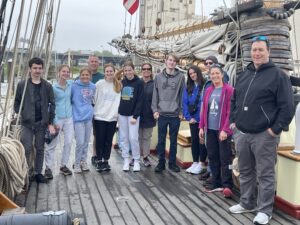
IHS Sailing Club Free Community Sail April 18, 2024
The IHS Sailing Club experienced a boating extravaganza on their field trip to Baltimore, Maryland on Thursday April 18. They began their adventure on The Pride of Baltimore II, a

The IHS Sailing Club experienced a boating extravaganza on their field trip to Baltimore, Maryland on Thursday April 18. They began their adventure on The Pride of Baltimore II, a
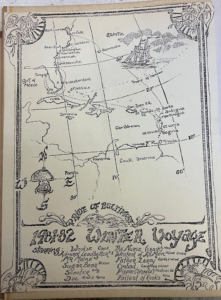
A brief update from the ship and Captain Miles shares a Pride of Baltimore Christmas story from 1981. Click here to watch A Pride of Baltimore Christmas. Video courtesy of
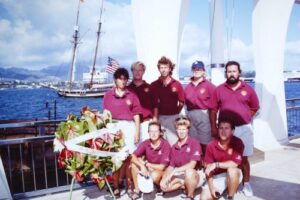
Today we remember the 2,403 service members and civilians who were killed during the attack on Pearl Harbor on December 7, 1941. A further 1,178 people were injured in the
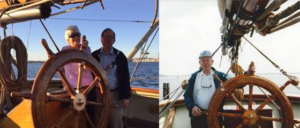
Pictured Left: Nancy Aldrich at Pride II‘s helm on a sail in Baltimore Harbor, 2015. Pictured Right: Nancy’s father, John Aldrich, at Chesapeake Bay Maritime Museum dock, St. Michaels, 2001.
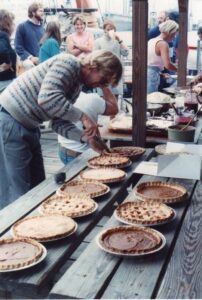
Crewman Dan Roeder cuts into a pie with zest at a Thanksgiving celebration in Galveston, 1988. Photo courtesy of Mariah Selene Clark. In 2023, Maryland’s iconic tall ship, Pride of Baltimore
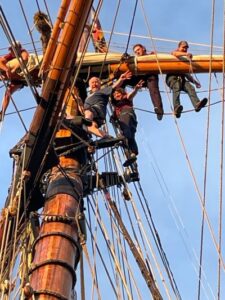
Pictured above: Willem Verbrugge waves to the camera from aloft, 2023. Willem Verbrugge’s relationship with Pride II is special. He first came aboard in the summer of 2019 looking forward to being a part